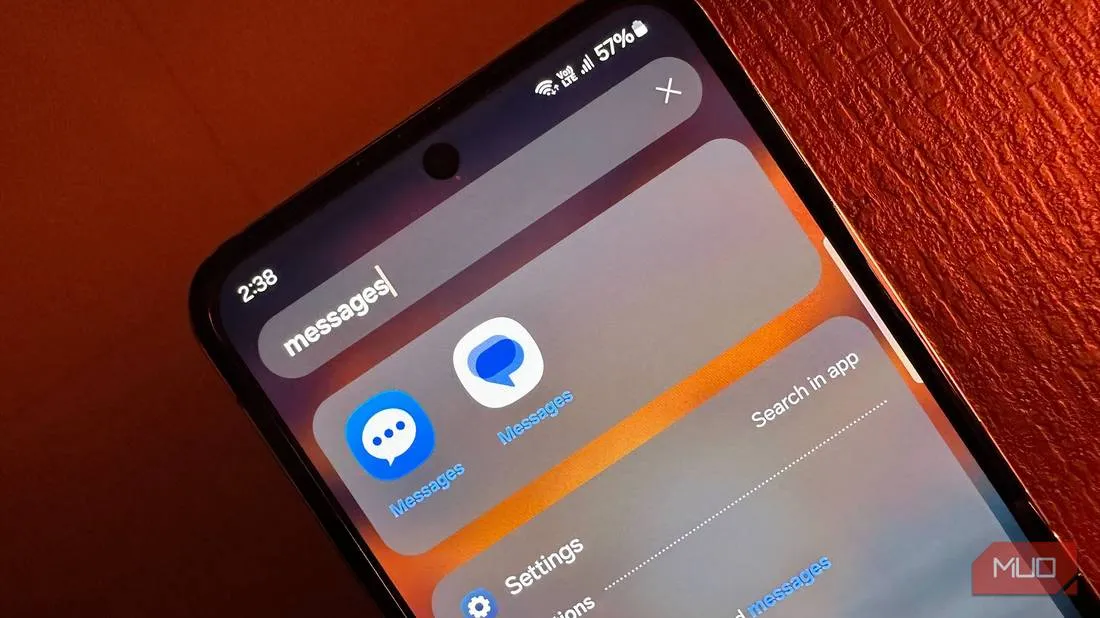In today’s digital era, messaging has become an integral part of our daily lives. From sending quick updates to having lengthy conversations, messaging apps have made communication effortless and efficient. With the rise of smartphones, there are now countless messaging apps available, each with its own unique features and capabilities. However, two of the most popular and widely used messaging apps are Google Messages and Samsung Messages.
Both Google Messages and Samsung Messages come pre-installed on their respective devices, making them easily accessible for users. While both offer similar basic functionalities like text messaging and group chats, they also have their own distinct features that set them apart. In this article, we’ll dive into a detailed comparison between Google Messages and Samsung Messages, and help you decide which messaging app is the right fit for you.

User Interface and Design:
First impressions matter, and in the case of messaging apps, the user interface (UI) and design play a crucial role. A clean and intuitive UI can greatly enhance the user experience and make navigating the app easy. Let’s see how Google Messages and Samsung Messages fare in terms of UI and design.
Google Messages:
Google Messages has a simple yet modern design with a white background and blue accents. The app follows Google’s Material Design guidelines, which means it has a clean and organized look. Upon opening the app, you’ll be greeted with a list of your recent conversations, along with a search bar at the top for quick access.
The bottom navigation bar consists of four icons – Home, Search, Compose, and Settings. Tapping on the Home icon will take you back to your conversations, while the Search icon allows you to search for specific messages or contacts. The Compose icon lets you start a new message, and the Settings icon gives you access to various app settings.
Overall, Google Messages has a minimalistic yet functional design that is easy to navigate even for first-time users.
Samsung Messages:
Samsung Messages also follows a clean design with a white background and blue accents, but it has a slightly different approach compared to Google Messages. The app has a tabbed interface, with different tabs for Conversations, Contacts, and More. The Conversation tab shows all your recent chats, while the Contacts tab lets you browse through your contacts.
The More tab houses additional features like Schedule Message, Spam filter, and settings. Users can also customize the order of these tabs as per their preference.
In terms of design, Samsung Messages provides a more organized look with its tabbed interface. However, some may find it overwhelming, especially if they’re used to a more traditional messaging app layout.
Features and Functionality:
Messaging apps not only allow us to send text messages but also come packed with a variety of features that enhance our messaging experience. Let’s take a closer look at the features and functionality offered by Google Messages and Samsung Messages.
Google Messages:
Google Messages offers a wide range of features that make it stand out from other messaging apps. One of its most significant features is RCS (Rich Communication Services), which allows users to send and receive high-quality images, videos, and audio messages. This feature also enables read receipts, typing indicators, and group chats with up to 100 participants.
Aside from RCS, Google Messages also has a built-in spam filter that blocks unwanted messages and spam. Users can also schedule messages to be sent at a specific time, making it convenient for sending birthday wishes or reminders. The app also supports dark mode and has a Smart Reply feature that suggests quick responses based on the context of the conversation.
Samsung Messages:
Like Google Messages, Samsung Messages also has a wide range of features that cater to the needs of its users. The app offers RCS for Galaxy devices, which allows users to send and receive high-quality multimedia messages. It also has a built-in spam filter and supports dark mode.
One notable feature of Samsung Messages is its ability to send an SOS message. In case of an emergency, users can press the power button three times to send an SOS text to their designated contacts along with their location. This can be a life-saving feature in certain situations.
Security and Privacy:

With messaging apps being a primary mode of communication, it’s essential to ensure the security and privacy of our conversations. Let’s see how Google Messages and Samsung Messages handle these concerns.
Google Messages:
Google Messages uses end-to-end encryption for RCS messages, ensuring that only the sender and receiver can access the content of the message. However, this feature is only available if both parties have RCS enabled on their devices.
The app also has the option to lock conversations with a passcode or fingerprint, making it harder for anyone to access your messages. Additionally, Google Messages also has a Private conversation feature that lets you hide specific chats from the main conversation list.
Samsung Messages:
Samsung Messages also offers end-to-end encryption for RCS messages, but like Google Messages, it requires both parties to have RCS enabled. The app also has a Secure Folder feature, which allows users to store their private conversations in a separate folder that requires a password or fingerprint to access.
Samsung Messages also has a Spam Protection feature that automatically blocks spam and phishing messages. Users can also report numbers as spam, which will help improve the app’s spam filtering capabilities.
Customization Options:
One aspect that sets Android apart from iOS is the level of customization it offers to its users. Both Google Messages and Samsung Messages allow users to personalize their messaging experience in different ways.
Google Messages:
Google Messages has a variety of customization options, starting with the ability to change the app’s theme. Users can choose between light, dark, and system default themes. The app also allows users to set custom notification sounds for specific contacts or conversations.
Additionally, Google Messages also supports chat bubbles, which are small floating icons that appear on your screen when you receive a message. These chat bubbles provide easy access to your conversations without having to open the app.
Samsung Messages:
Samsung Messages also offers customization options, including the ability to change the app’s theme and set custom notification sounds for different contacts. However, one feature that sets Samsung Messages apart is its support for themes. Users can download and apply various themes from the Galaxy Store, giving the app a unique look and feel.
Integration with Other Apps:

Another vital aspect to consider when choosing a messaging app is its integration with other apps. Let’s see how Google Messages and Samsung Messages fare in this regard.
Google Messages:
Being a Google product, it’s no surprise that Google Messages seamlessly integrates with other Google apps like Google Drive and Google Duo. Users can easily access their conversation backups on Google Drive and make video calls through Google Duo directly from the messaging app.
The app also has a feature called “Verified SMS,” where businesses can verify their identity and display their logo and name in the conversation. This helps users identify genuine businesses and avoid scams and phishing attempts.
Samsung Messages:
Similar to Google Messages, Samsung Messages also integrates well with other Samsung apps like Samsung Notes and Calendar. Users can easily save important messages to Samsung Notes or create events in Calendar directly from the messaging app.
Samsung Messages also supports Dual Messenger, a feature that allows users to have two instances of the same app on their device. This can come in handy if you have multiple accounts for messaging apps like WhatsApp or Facebook Messenger.
Conclusion:
Choosing between Google Messages and Samsung Messages can be a tough decision as both apps offer a plethora of features and have their own unique selling points. If you’re more inclined towards a clean and minimalistic design, Google Messages may be the right fit for you. However, if you prefer a more organized interface with added customization options, Samsung Messages may be the better option.
In terms of features, both apps offer a similar set of functionalities, but Google Messages takes the lead with its Smart Reply feature, while Samsung Messages stands out with its SOS messaging capability. When it comes to security and privacy, both apps have strong encryption methods in place, making them equally reliable options.
Ultimately, the choice between Google Messages and Samsung Messages boils down to personal preference and what features are essential to you. Whichever app you choose, you can rest assured that you’ll have a seamless and efficient messaging experience.

